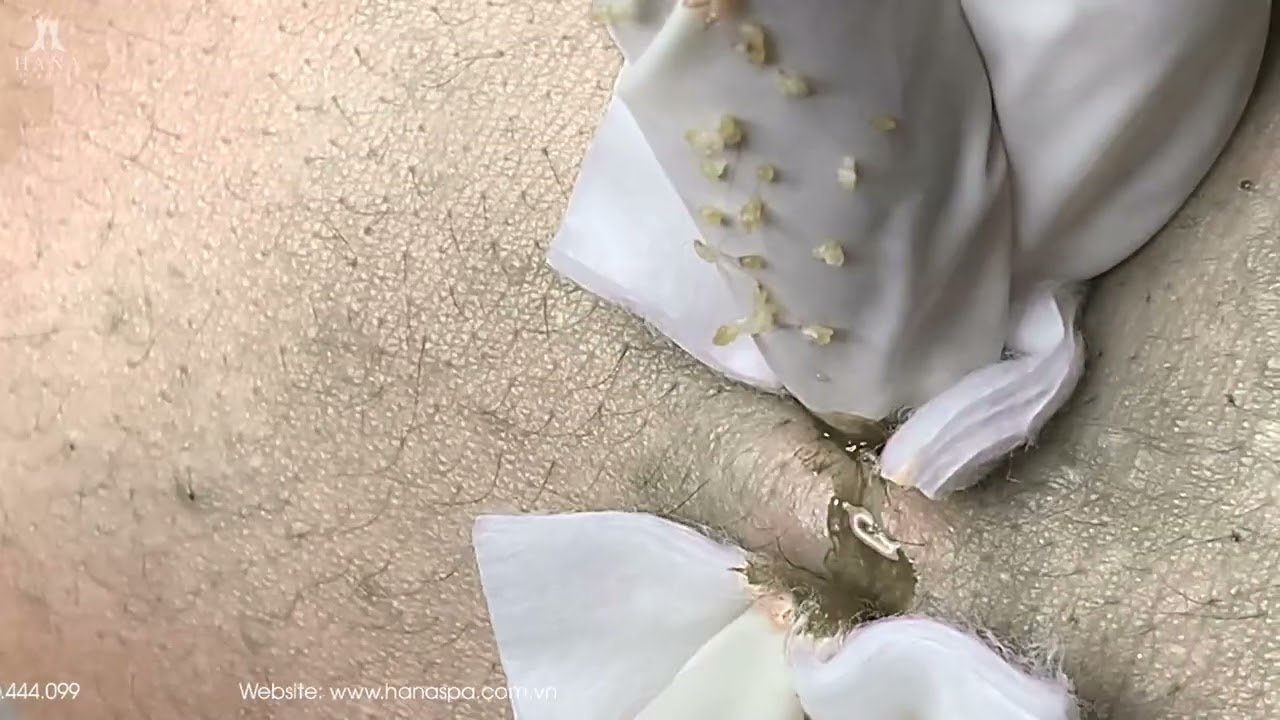Skincare professionals often encounter challenging cases involving deep cystic acne, stubborn blackheads, whiteheads, and milia. These skin concerns, while common, can be both painful and frustrating for those who deal with them. Fortunately, with the right extraction techniques and proper aftercare, significant improvements can be achieved.
If you’re trying to deal with pimples (especially ones that you’re tempted to pop), here’s how to safely handle them without causing scarring or infection. Popping is usually not recommended, but if you’re really going to do it, better to do it the right way.
🧼 If You Must Pop a Pimple (Last Resort):
-
Only pop whiteheads, which have a visible white center.
-
Wash your hands thoroughly with soap and water.
-
Cleanse the area around the pimple with a gentle cleanser or rubbing alcohol.
-
Use a warm compress for a few minutes to soften the skin and open pores.
-
Sterilize a needle or pin (like with a flame or rubbing alcohol).
-
Gently pierce the whitehead’s surface, don’t go deep.
-
Wrap clean tissues around your fingers and gently press down and inwards.
-
Stop if nothing comes out easily — forcing it can damage your skin.
-
Apply an antiseptic or acne treatment afterward (like benzoyl peroxide).
-
Avoid touching it afterward to let it heal.
✅ Better Ways to Treat Pimples (Without Popping)
-
Salicylic acid – Unclogs pores and helps shrink pimples.
-
Benzoyl peroxide – Kills bacteria and reduces inflammation.
-
Tea tree oil – A natural alternative with antibacterial properties.
-
Hydrocolloid patches – Pull out pus and protect from bacteria.
-
Retinoids – Prevent clogged pores (good for ongoing acne issues).
🛑 Don’t Pop If:
-
It’s a deep, red, or painful cyst or nodule
-
It’s not “ready” (no whitehead)
-
It’s around sensitive areas (like your lips or nose)
Blackheads and whiteheads are more superficial but just as persistent. Blackheads form when pores are clogged with oil and dead skin, and exposure to air causes them to oxidize and turn dark. Whiteheads, on the other hand, remain closed and can appear as small, firm bumps. Milia are similar but often harder and more pearl-like in appearance, frequently found around the eyes or cheeks.
Professional pimple popping and extractions not only help clear the skin but also reduce the risk of infection and future breakouts. A thorough cleansing, followed by steaming and gentle pressure, helps to dislodge impurities from the pores. After the extraction, soothing treatments such as masks or LED therapy can calm the skin and support healing.
Popping a pimple may seem like a quick fix, but dermatologists strongly advise against it due to the risks of scarring, infection, and prolonged healing. Here’s a comprehensive guide on how to manage pimples safely, with expert-backed advice and references.
🚫 Why You Should Avoid Popping Pimples
Popping pimples can lead to:
-
Scarring: The pressure can damage skin tissue, leading to permanent scars.
-
Infection: Introducing bacteria from your hands can worsen the condition.
-
Hyperpigmentation: Inflammation from popping can cause dark spots.
-
Delayed Healing: Squeezing can prolong the healing process and cause more breakouts.Healthline+1Northwestern Medicine+1Time+1India Today NE+1
Dermatologist Dr. Joshua Zeichner notes that trauma to the skin from popping can lead to scabbing, infection, or scarring .Teen Vogue
✅ Safe Alternatives to Popping
Instead of popping, consider these dermatologist-recommended methods:
1. Use Over-the-Counter Treatments
-
Benzoyl Peroxide: Reduces bacteria and inflammation.
-
Salicylic Acid: Unclogs pores and reduces swelling.
-
Tea Tree Oil: Has antibacterial properties.
These treatments can help heal pimples without the risks associated with popping .
2. Apply a Warm Compress
Applying a warm compress can help open pores and allow the pimple to drain naturally, reducing the need to pop it .Northwestern Medicine
3. Use Pimple Patches
Hydrocolloid patches can absorb excess fluid and protect the area from bacteria, promoting healing .
🧴 If You Must Pop (Last Resort)
If you decide to pop a pimple, follow these steps carefully:
-
Ensure the Pimple is Ready: Only pop whiteheads that are close to the surface.
-
Wash Your Hands and Face: Cleanliness is crucial to prevent infection.
-
Sterilize a Needle: Use rubbing alcohol to sterilize a needle.
-
Pierce the Pimple Gently: Insert the needle at an angle into the widest part.
-
Apply Gentle Pressure: Use clean tissues to apply gentle pressure to drain the pimple.
-
Clean the Area: Apply an antiseptic like witch hazel to prevent infection .Healthline
Dr. Sandra Lee, known as Dr. Pimple Popper, advises that if a pimple doesn’t pop easily, it’s best to leave it alone to avoid scarring .gq.com+1people.com+1
🩺 When to See a Dermatologist
If you have persistent or severe acne, it’s best to consult a dermatologist. They can provide professional treatments and personalized advice to manage your skin health effectively.
📌 Summary
While popping pimples might offer immediate relief, the potential risks outweigh the benefits. Opt for safer alternatives like over-the-counter treatments, warm compresses, and pimple patches. If necessary, follow proper techniques when popping a pimple and consult a dermatologist for persistent issues.
Feel free to ask if you need product recommendations or further information on acne treatment!

While it can be tempting to squeeze pimples at home, improper technique can worsen inflammation or lead to scarring. Seeking the help of a licensed professional ensures safer and more effective results, promoting healthier, clearer skin in the long run.
